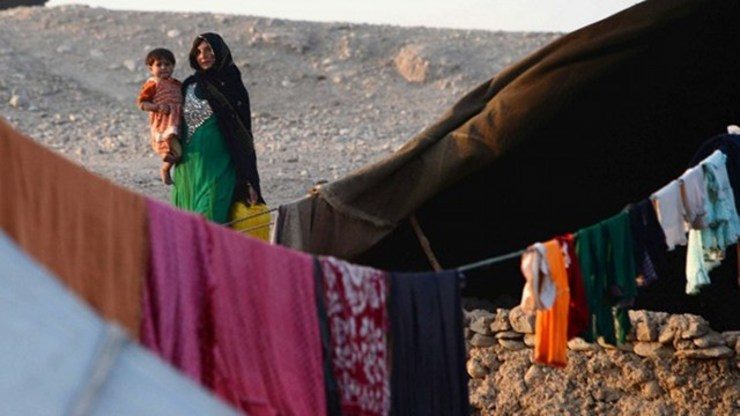SUMMARY
This is AI generated summarization, which may have errors. For context, always refer to the full article.

KABUL, Afghanistan – International aid was meant to transform Afghanistan’s welfare standards, but orphanages in Kabul reveal that the most vulnerable children, many left parentless by war, have seen little benefit from the billions of dollars spent.
At Windows of Hope, an orphanage in the war-torn capital, organizers and volunteers make the best of a tiny budget to look after 12 children, most of them severely disabled.
Despite spartan conditions, house manager Frozan provides basic comfort and security for youngsters left neglected by the foreign-funded Afghan government and the many international charities that are active in the country.
“These are the children who do not have anyone who cares for them,” Frozan, 22, said. “There are many problems because they need someone every moment of the day.
“Many are victims of war, because they have lost their families. They have suffered, they have mental issues, and their relatives are not prepared to keep them.”
The US-led international intervention in Afghanistan since 2001 combined a military campaign against the Taliban with a massive aid development program.
New schools, hospitals, roads and power stations have been built, and funds provided for projects ranging from adult literacy classes to Internet start-ups, pomegranate farms and handicraft workshops.
But the impact has been limited, with infrastructure and social care still feeble even in the cities.
Frozan, who uses only one name, lost both her parents in an airstrike on her home in Kabul during the 1992-1996 civil war, when she was only 6 months old.
She survived, but lost a leg and relies on crutches to move around.
“When I was 9, my grandmother passed away, and then I was given to another woman, and my experience gave me motivation to work in such a place as this,” she said.
Aid funding to Afghanistan is set to fall in the coming years as international attention turns elsewhere 13 years after the fall of the Taliban regime.
Exact figures are hard to pin down, but the US Agency for International Development (USAID) alone spent $15 billion since 2001, according to official figures.
December 2014 also marked the end of the US-led NATO war in Afghanistan, as most foreign troops left. Those that remain will no longer undertake combat missions against the Taliban.
Corruption culture
Adjusting to a new and even more challenging era, Windows of Hope is seeking funds from the government and Afghan community groups, rather than relying on the occasional foreign grants that have kept it open in recent years.
But the government’s 30 public orphanages are often beset by corruption, and they highlight officialdom’s inability to funnel cash to those need it most.
At the state-run Tahia Maskan orphanage in Kabul, 500 boys aged between 11 and 18 live in a huge run-down building with few facilities.
Sayed Abdullah Hashimi, director of public orphanages, admits that some Afghan parents with connections use government orphanages to house and educate their children – meaning real orphans are denied scarce resources.
He says the government allocates 85 Afghanis ($1.50) per day to feed each child in state orphanages, but that only 50 Afghanis reach their intended destination due to bureaucracy and corruption.
“If the people who are working for the children are corrupt, we cannot help the children even if we reform the system,” he said. “We need responsible people who will sincerely work for the children.
“With the presence of the international community, and establishment of a credible government system, a lot of effort has been made to support children. I hope things are getting better. We are trying.
“Our orphans eat meat 3 times a week, fruit 3 times a week, yogurt 3 times a week, and rice every day.”
There are an estimated 110,000 orphans in Afghanistan, about 12% of them in orphanages, Hashimi said.
The flood of money since 2001 created an endemic culture of corruption in Afghanistan, with Transparency International rating the country only better than Sudan, North Korea and Somalia.
President Ashraf Ghani, who came to power in September, has vowed to crack down on fraud, but it is a mountainous task.
Sami Hashemi, a Kabul-based UNICEF child protection specialist, is blunt in his assessment of how orphans are treated in Afghanistan.
“Orphanages are not providing service to the most vulnerable children,” he said. “What are the gaps of services? We need to identify them.
“It will take time, nothing will happen overnight. Those who need it must have access to services.” – Rappler.com
Add a comment
How does this make you feel?
There are no comments yet. Add your comment to start the conversation.